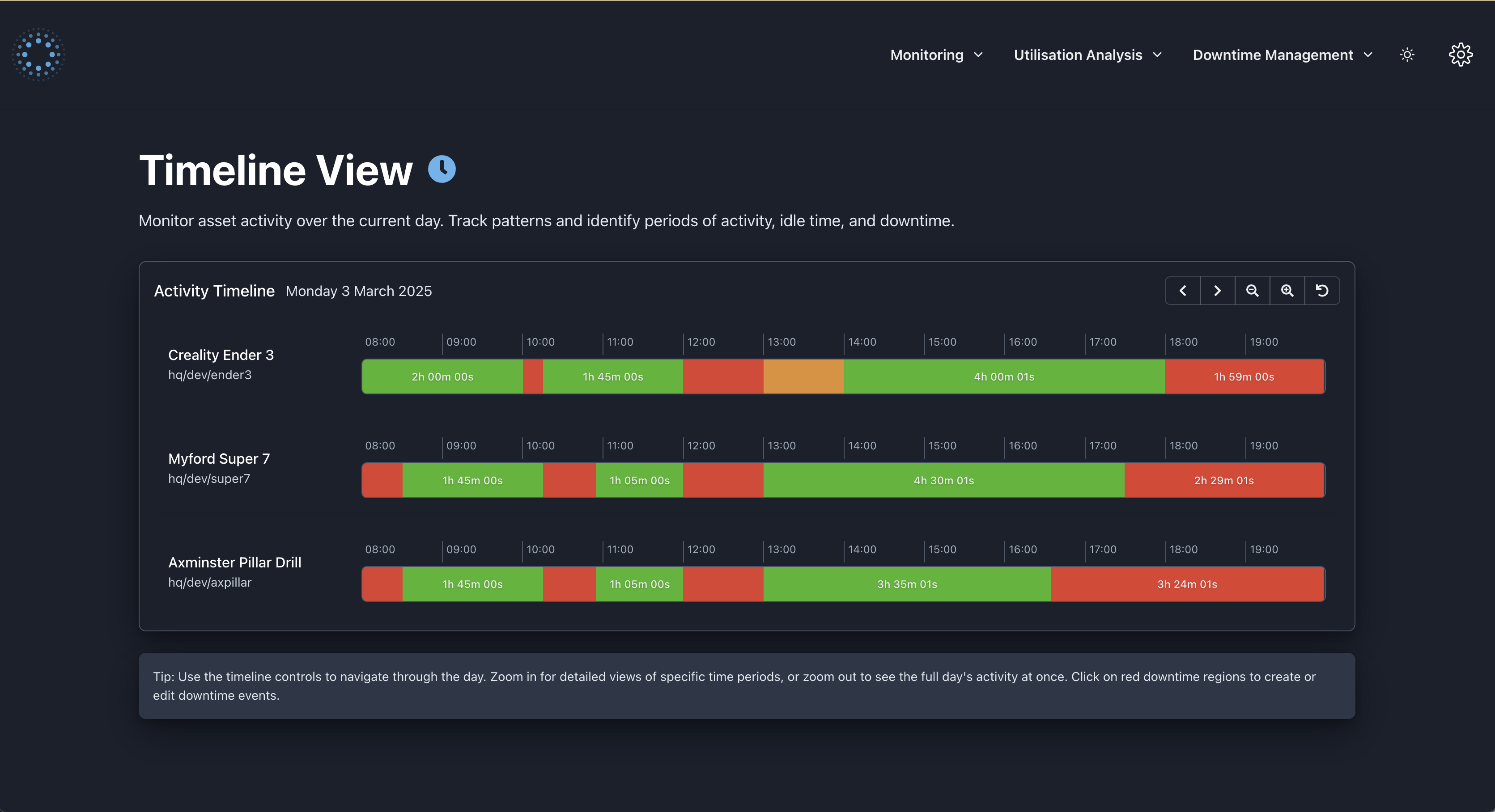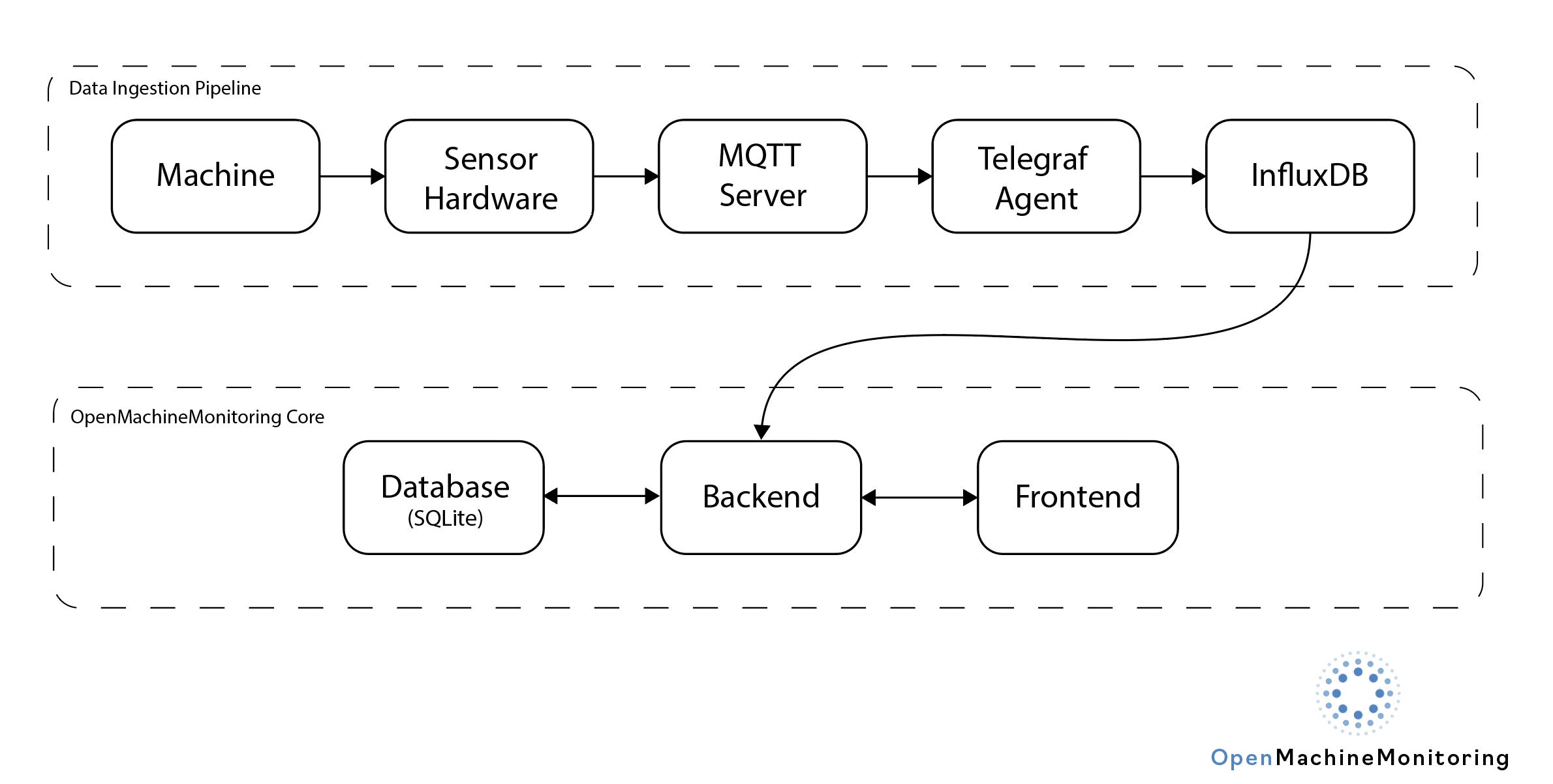Overview
OpenMachineMonitoring is a lightweight, extensible, open-source platform for collecting, visualising, and analysing machine utilisation data.

UI showing machine utilisation over the course of a day
Key Features
- Data collection using off-the-shelf current clamp sensors
- MQTT support for easy integration and expandability
- Asset view showing all of the machines currently connected and their statuses
- Timeline view showing different periods of activity over the current day
- Weekly view showing the daily activity of each machine over the current week
- Calendar view showing daily activity over the year
- Comparison view to compare uptime across connected assets
- Ranked view showing all assets in order of utilisation
- Downtime events to explain periods of inactivity with a log and stats view.
